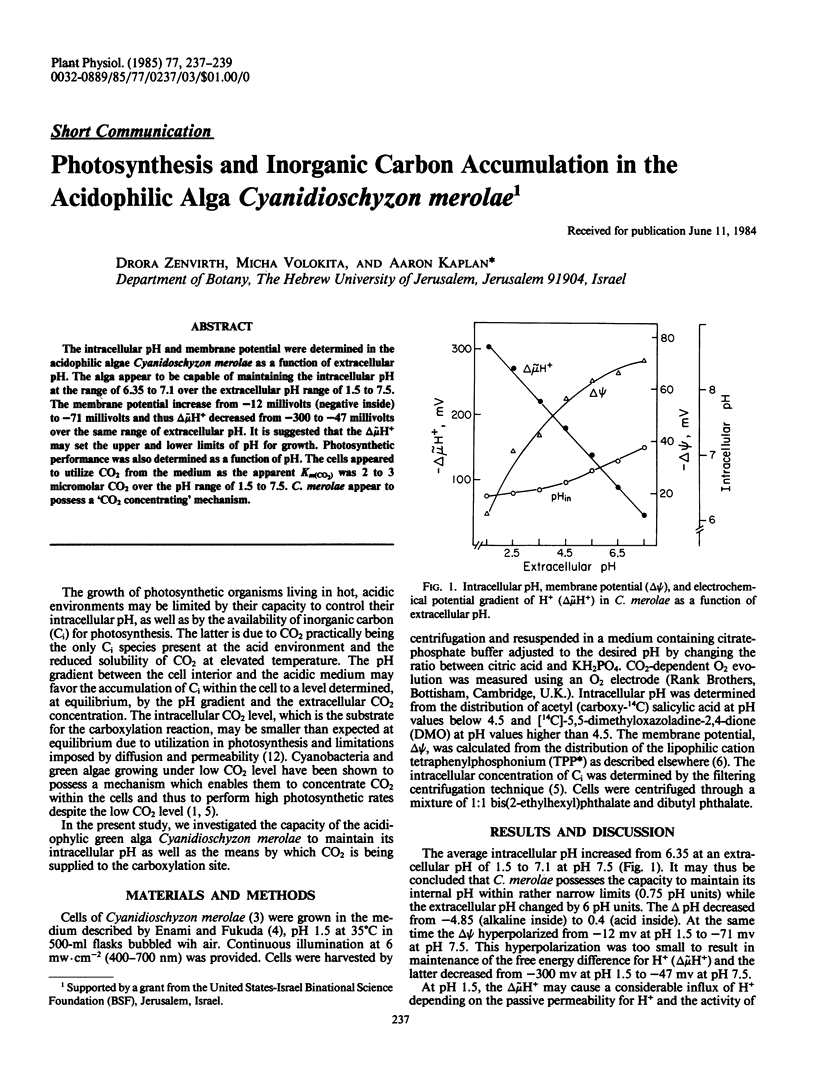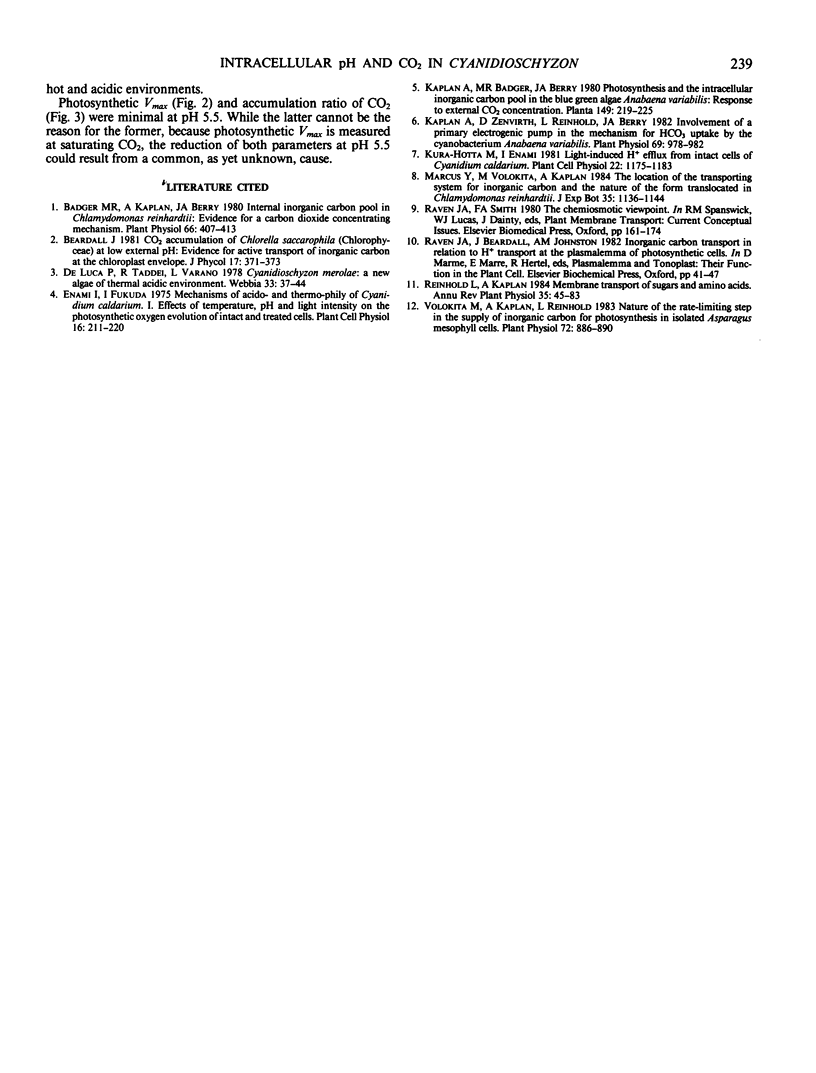Abstract
The intracellular pH and membrane potential were determined in the acidophilic algae Cyanidoschyzon merolae as a function of extracellular pH. The alga appear to be capable of maintaining the intracellular pH at the range of 6.35 to 7.1 over the extracellular pH range of 1.5 to 7.5. The membrane potential increase from −12 millivolts (negative inside) to −71 millivolts and thus Δμ̃H+ decreased from −300 to −47 millivolts over the same range of extracellular pH. It is suggested that the Δμ̃H+ may set the upper and lower limits of pH for growth. Photosynthetic performance was also determined as a function of pH. The cells appeared to utilize CO2 from the medium as the apparent Km(co2) was 2 to 3 micromolar CO2 over the pH range of 1.5 to 7.5 C. merolae appear to possess a `CO2 concentrating' mechanism.
Full text
PDF


Selected References
These references are in PubMed. This may not be the complete list of references from this article.
- Badger M. R., Kaplan A., Berry J. A. Internal Inorganic Carbon Pool of Chlamydomonas reinhardtii: EVIDENCE FOR A CARBON DIOXIDE-CONCENTRATING MECHANISM. Plant Physiol. 1980 Sep;66(3):407–413. doi: 10.1104/pp.66.3.407. [DOI] [PMC free article] [PubMed] [Google Scholar]
- Kaplan A., Zenvirth D., Reinhold L., Berry J. A. Involvement of a Primary Electrogenic Pump in the Mechanism for HCO(3) Uptake by the Cyanobacterium Anabaena variabilis. Plant Physiol. 1982 Apr;69(4):978–982. doi: 10.1104/pp.69.4.978. [DOI] [PMC free article] [PubMed] [Google Scholar]
- Volokita M., Kaplan A., Reinhold L. Nature of the rate-limiting step in the supply of inorganic carbon for photosynthesis in isolated asparagus mesophyll cells. Plant Physiol. 1983 Jul;72(3):886–890. doi: 10.1104/pp.72.3.886. [DOI] [PMC free article] [PubMed] [Google Scholar]


